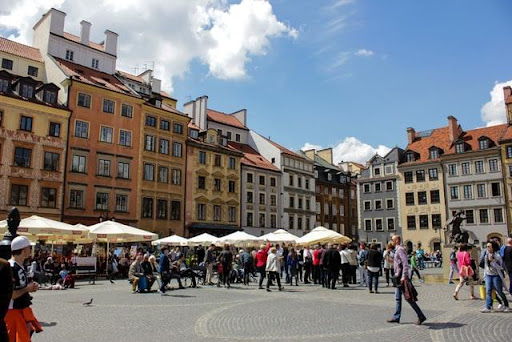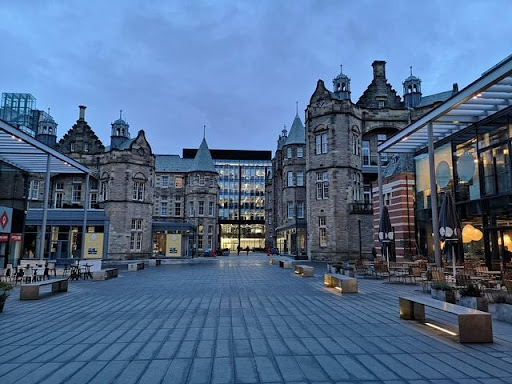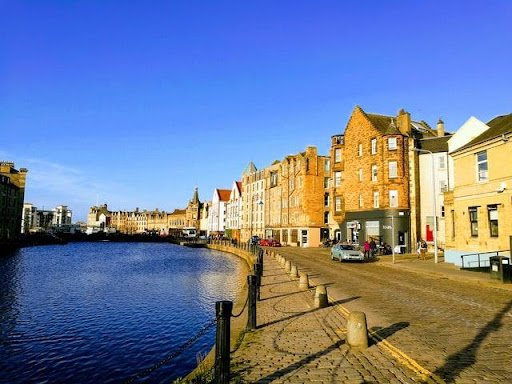Despite the advancements in technology and the progression of the digital age, modernism rearing its head, there are still remnants of the past that everyone finds awe-inspiring and hopes to preserve. These can be found in our downtown spaces to Preserving History.
The beauty of the buildings, each unique and distinct, draws people. That’s whether it’s an apartment building, office space, or single-family home. (I’m going to use this quote because it’s perfect) – “the quality of place remains a key factor” (end quote) as to where people want to conduct their business affairs and call home.
It wasn’t in that distant of a past that many “future-seekers” or “technologist-hounds” were implying that these sorts of places would end up in the “irrelevant” pile.
We’re all really creatures of habit down deep, aren’t we? We come from generations that we look back to for comfort, and we want to bring that comfort forward with us. That implies home, and these historic places carry that implication.
Many growing cities find it essential to cherish their quality older structures and are engaged in restoring and rebuilding their downtowns with well-established, qualified, trusted companies like JC Beal, who share that same vision. It’s one of enthusiasm for character-rich spaces.
The younger populations are navigating to the downtown areas to find walkable communities and local amenities with a fondness for the historic buildings. Let’s look at some practical reasons why downtown should be preserved and restored.

Why Should Downtown Be Preserved And Restored Instead Of Modernized
Many people who desire to progress the world rapidly have the idea that everyone is on board with disconnecting from what used to be. They’re finding that isn’t the case, at least not as far as architecture, construction, and design.
People, even young adults, are drawn toward historic buildings, apartments, and single-family homes from the day when their grandparents or even great-grandparents lived and worked.
There’s nothing about a modern structure even closely comparable to the architecture of these places. Many construction firms are doing their best to restore these buildings and revitalize their downtowns.
It seems more people are gravitating toward the towns and city living, hoping for a walkable commute to anywhere they need to go, plus the availability of varied amenities.
A significant draw is the character you can only find in these historic structures. Go here for details on how restoration offers a level of sustainability and beauty to a downtown location. Here are a few reasons people believe restoring and preserving is the way contractors need to approach their downtown areas.
-
Table of Contents
The culture- Preserving History
A historic structure is a physical reminder of the past. There are things back in the day that people don’t want to let go of. Moments with grandparents and that feeling those times elicited for us.
Those are things we want to carry with us to the next generation. You can’t speak to those times and generate those feelings for another person. But if they go into a building with that vibe, the story you tell will communicate that feeling much more clearly; it’s a connection to what came before.
New construction can’t replicate the culture these places encompass. You can make them look similar and mimic the style, but you can’t bring that feeling. The only way will be to find a contractor who can incorporate old-school techniques and materials. No, you still wouldn’t have the soul.
-
Learning experience – Preserving History
Restoring a historic home or commercial structure acts as a learning experience for many contractors, architects, or even the neighboring community. It would be such a loss if these structures were demolished and all that could be taught were destroyed.
Not only can current artisans learn methods used from the past, design techniques, and how things evolved to where they are currently, but there might be a thing or two we might want to reincorporate. Maybe there’s a better technique than how it’s done today, a more quality effort.

-
The environment- Preserving History
Any time you restore and preserve, you’re being friendly to the environment instead of wasting materials to construct new buildings. The existing materials are refurbished, and the structures are rehabilitated, allowing a greater durability and less likelihood of maintenance costs.
With the reuse of historic buildings and upgrading of the downtown areas, there’s less need to sprawl out suburban areas congesting the neighborhoods contributing to traffic and depleting the natural surroundings leaving little space for the wildlife.
-
The economy
Not only does restoration and preservation help the environment, but once the buildings start being restored, new businesses open and jobs become available, jumpstarting the economy, which begins to thrive because the downtown area is revitalizing.
Business leaders hope to conduct their affairs from historic offices because these impress their clients. People are moving to the area for the new job opportunities and the unique structures available for homes.
Apartment dwellers choose the downtown area because the apartments are more prominent and offer more character for a lower price point than a modern, high-end, new construction.

Final Thought
Advances in technology and the digital world are progressing us into the future rapidly. Many “futurists” find that moving forward and forgetting the old ways is for the greatest good.
Maybe the old ways weren’t as efficient or practical for some things. Perhaps you do need to progress in some ways; otherwise, in many ways, we wouldn’t be where we are today in many industries. But, we don’t have to let go of everything.
Many of us want to hold onto a bit of the past and bring some with us into the future for the next generations to carry forward into their future. That’s from a grandma, maybe even a great-grandma.
Some of these people lived and worked “downtown” in some of these beautiful structures, many of which stand abandoned.
Fortunately, construction teams are working to restore and rehabilitate some of the buildings to their previous glory so we can enjoy them, some again and some for the first time, with fascination, wonder, and curiosity about what was going on back when it was new.
Restoration and preservation can do a lot for a downtown. Hopefully, more cities will take a fresh look at theirs.










